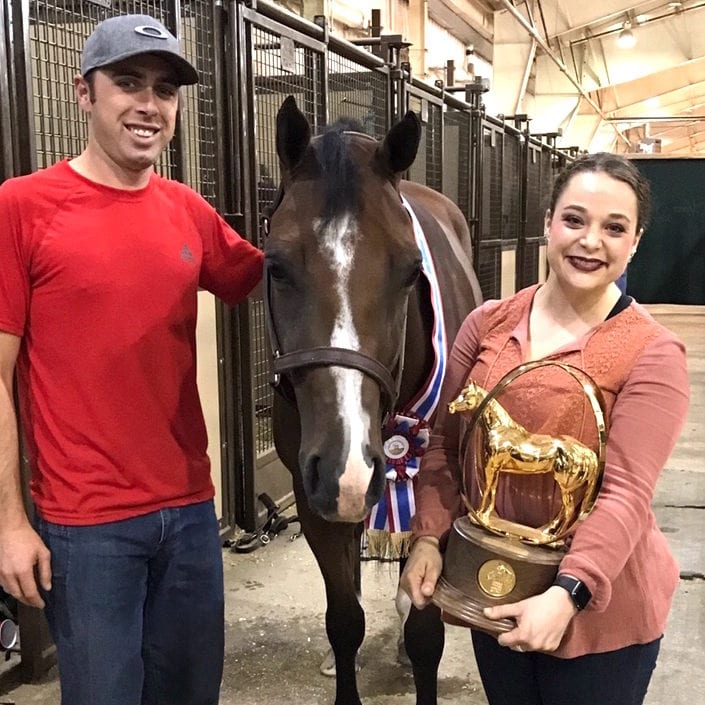The purchase of a new horse brings the buyer elation, excitement, and hope for their future with their new partner. The purchase of a new horse can also be exasperating and a pre-purchase exam is an often under-discussed component that can often make or break the deal. Whether you are the buyer, seller, trainer, or broker, pre-purchase exams can be nerve-wracking experiences identifying issues and glitches that could potentially ruin a sale.
With constantly improving technology and state-of-the-art x-ray (radiograph) machines, a “clean” pre-purchase exam is a thing of the past. But how important is the pre-purchase exam? What is the best protocol to benefit both the buyer and the seller? We talked to some veterans at selling, buying, and examining horses to gain more knowledge about this integral part of the sale process.
Importance of the Pre-Purchase Exam
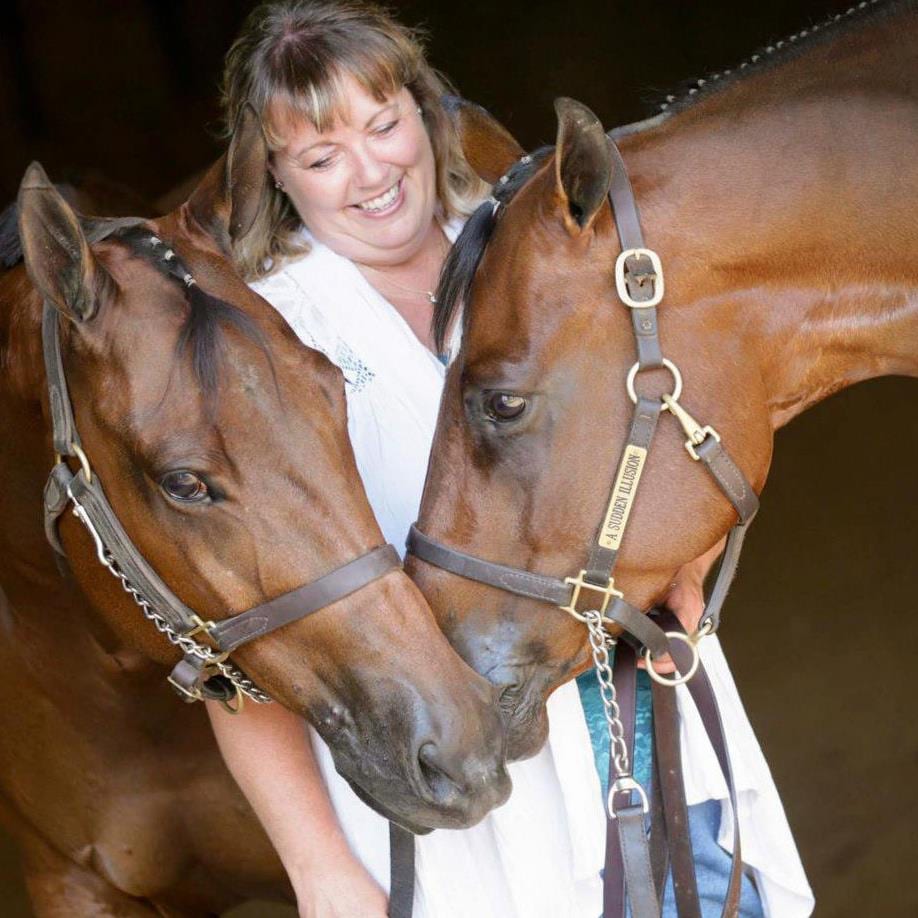 No two horse deals are alike. Seasoned horse sale veterans tend to develop their own standard pre-purchase exam protocol. AQHA World Champion exhibitor, Joanne Garnett (pictured right), has been involved in numerous sales in her 45 years in the horse industry. Garnett stresses that it is worth it to invest time and money and put ample thought and consideration into the results of a pre-purchase exam.
No two horse deals are alike. Seasoned horse sale veterans tend to develop their own standard pre-purchase exam protocol. AQHA World Champion exhibitor, Joanne Garnett (pictured right), has been involved in numerous sales in her 45 years in the horse industry. Garnett stresses that it is worth it to invest time and money and put ample thought and consideration into the results of a pre-purchase exam.
AQHA Amateur exhibitor, Caroline Cavallo and her mother, Gail, have been involved in the horse industry for 25 years and most recently purchased 2016 AQHA Junior Trail World Champion, So Good To B Me (pictured above). Caroline echoes Joanne’s philosophy. “A pre-purchase exam is the most important thing to us. We usually buy younger horses and train them for a few years with the goal of resale. If a horse is not relatively clean on a pre-purchase exam, we are not willing to take the risk of buying that horse. We do an extensive exam and we like to know as much as we can,” says Caroline.
Cooper Evans, owner and head trainer at Star Performance horses, also considers the pre-purchase exam to be one of the most important variables when considering a new horse for his program.
 “When we are looking for all around horses, they are hard to find and people want them to last, so we are looking for a horse who vets relatively clean and will require a minimal amount of maintenance. Although they may come with a higher price tag, the fact that they will potentially last longer with less maintenance required is key and the pre-purchase exam is a telling factor in this equation,” says Cooper.
“When we are looking for all around horses, they are hard to find and people want them to last, so we are looking for a horse who vets relatively clean and will require a minimal amount of maintenance. Although they may come with a higher price tag, the fact that they will potentially last longer with less maintenance required is key and the pre-purchase exam is a telling factor in this equation,” says Cooper.
Although the protocol for a pre-purchase is different for a halter horse than a riding horse, Dewey Smith, owner and head trainer at Dewey Smith Quarter Horses, considers pre-purchase exams to be an important factor in the sale of many halter horses.
“On the halter side, we do pre-purchases, but they are not as extensive as the ones done on riding horses, however, they are crucial, especially in situations where insurance companies are involved. Depending on the amount of money you are spending on the horse, a more extensive pre-purchase may be required,” says Dewey (pictured left).
Pre-Purchase Protocol
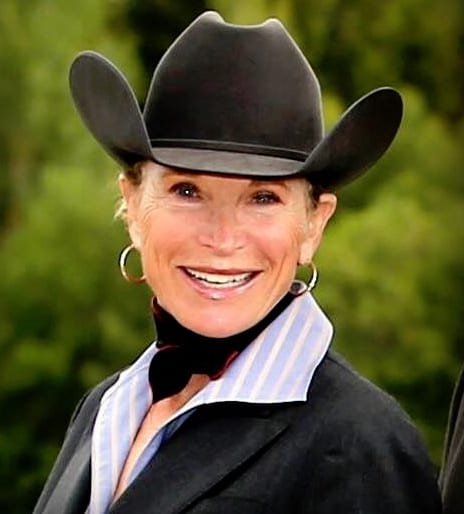 The nuances of a pre-purchase exam can be daunting even to the most seasoned buyers. Ruth Ellen, founder and owner of The Horse Source and broker for many horse sales, has seen sales made and broken because of the results of a pre-purchase exam.
The nuances of a pre-purchase exam can be daunting even to the most seasoned buyers. Ruth Ellen, founder and owner of The Horse Source and broker for many horse sales, has seen sales made and broken because of the results of a pre-purchase exam.
According to Ruth (pictured right), radiographs are rarely “clean” and the purpose of a pre-purchase exam is to examine the issues the vet can see and determine what the buyer can live with. “It is not a question of ‘pass’ or ‘fail,’ it is all about what will work for the buyer. Once the vet has conducted a physical exam and radiographs are taken of the horse, the buyer is able to make an educated decision as to whether or not they feel comfortable with the sale.”
All of the seasoned buyers agreed that a “clean” horse is almost impossible to come by but stressed the importance of using radiographs as a baseline. Joanne always does extensive radiographs on every horse she is looking to purchase and each time there is an irregular finding, she stops the exam so that they can discuss the issue and decide whether they should proceed with the exam or if that issue is a deal breaker.
“We look at the severity of an issue and decide if it is something we can manage. There have been times when we have stopped the exam in the middle because we knew that horse had issues we were not able to deal with,” she says.
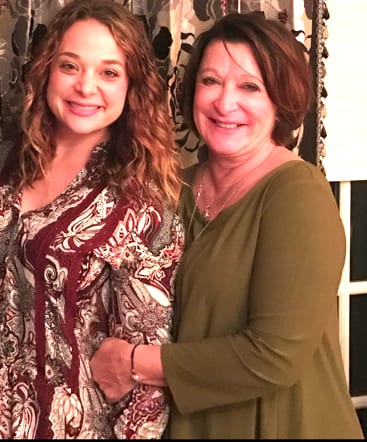 Caroline Cavallo and her mother, Gail, admittedly have more radiographs done than most people might do. “We feel like it’s worth it to invest more money in the exam in order to have as much knowledge as possible,” she says. (pictured left)
Caroline Cavallo and her mother, Gail, admittedly have more radiographs done than most people might do. “We feel like it’s worth it to invest more money in the exam in order to have as much knowledge as possible,” she says. (pictured left)
Although a horse’s age and experience are factors to consider when it comes to radiograph results, both Joanne and Caroline agree that certain issues are deal breakers regardless. However, older and more seasoned horses with a few minor issues may be forgivable.
“We are obviously going to be more picky about the younger horses since they haven’t been used as much and have less reason to show wear. With the older horses, we might be more lenient as far as arthritis or needing to be injected more often, however, if the horse needs a surgery or a significant amount of maintenance, that is a deal breaker for us,” says Caroline.
On the trainer side, Cooper always advises his clients to have the vet do a thorough physical exam and take pictures of the front feet, hocks, and stifles. “If we have any abnormal findings during the standard radiographs, we might go more in depth,” he says.
 The results of the flexion test are very important to Cooper because, unlike radiographs that show structural blemishes that may or may not affect the horse’s performance, a flexion test shows where the horse is actually sore.
The results of the flexion test are very important to Cooper because, unlike radiographs that show structural blemishes that may or may not affect the horse’s performance, a flexion test shows where the horse is actually sore.
“To me, a horse that flexes sound is usually sound. I have had minor blemishes affect a horse in a major way and major issues that should have made a horse lame that never affected them. The flexion test helps me to see where the horse hurts and might show soft tissue injuries that wouldn’t show up on radiographs,” says Cooper (pictured right).
According to Dewey, the main concern for halter horses as far as radiographs are concerned is making sure there is no rotation in their front feet. “For the most part, we don’t do flexion tests. Sometimes we will x-ray the hocks and stifles, but since we are not asking as much of our horses physically, our exam is about making sure our horses can be used for their intended purpose,” he says.
If the horse is a breeding horse, they need to be checked in order to ensure they can reproduce. “For a stallion, we might do more thorough radiographs in order to make sure he is okay for breeding and passing his traits on; he also needs to be able to mount the dummy. Additionally, a semen analysis may be included and for a mare, we are going to make sure she has both her ovaries,” Smith explains.
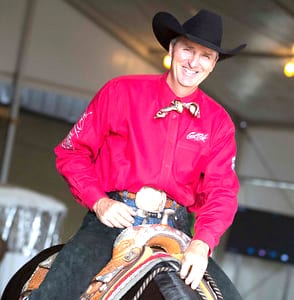 Throughout his extensive career, Gil Galyean (pictured left), owner and head trainer at Galyean Quarter Horses has seldom seen a horse with pristine radiographs and makes sure to advise his clients that most horses have something that isn’t going to be perfect. Gil believes that most horses can be maintained and stay sound as long as there are no major issues.
Throughout his extensive career, Gil Galyean (pictured left), owner and head trainer at Galyean Quarter Horses has seldom seen a horse with pristine radiographs and makes sure to advise his clients that most horses have something that isn’t going to be perfect. Gil believes that most horses can be maintained and stay sound as long as there are no major issues.
“If you can maintain a horse and keep them sound, in my opinion, it is worth the gamble even if the radiographs are not perfect. Obviously, you don’t want to pay a huge amount of money for a horse that isn’t going to last, but you can’t let little things get in the way of owning a great horse. Sometimes, people let the results of a pre-purchase exam keep them from winning,” says Gil.
Planning Ahead
Over the years, Ruth Ellen has seen prospective buyers spend a lot of money on pre-purchase exams only to find issues that a seller could have disclosed if they had a baseline set of radiographs to offer the buyers. Because of this, she recommends that a seller of a mid-range to high dollar horse should have a baseline set of radiographs in order to disclose information to the buyer ahead of time.
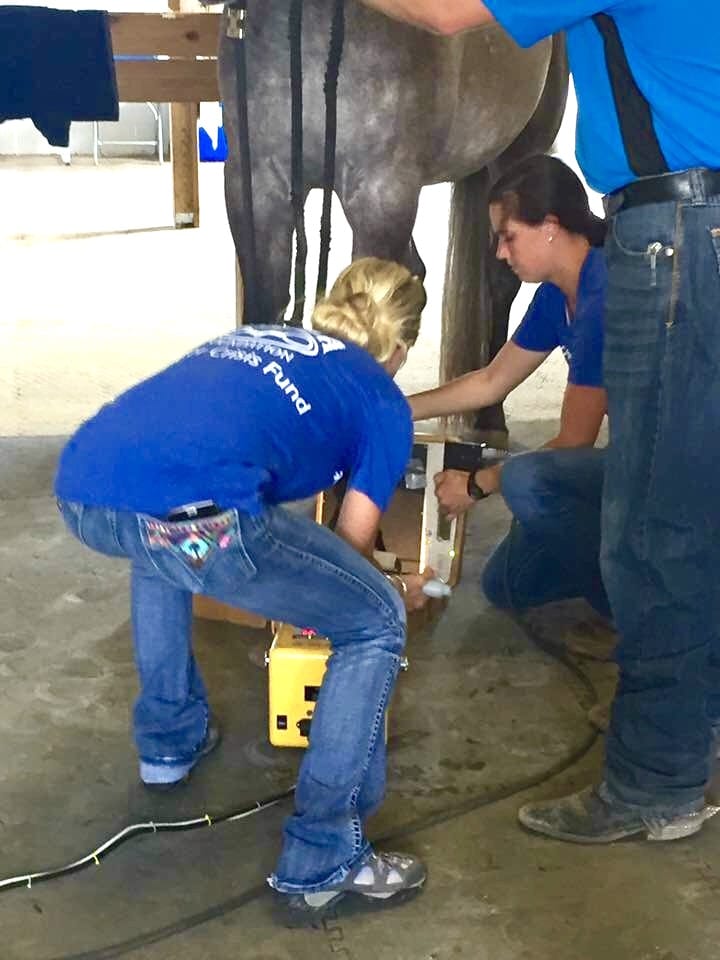 “Offering the buyer current radiographs of the front feet, hocks, and stifles (within the past six months to a year) allows the buyer to make an informed decision about the horse before investing excessive time and money only to find issues that could have been disclosed ahead of time,” says Ruth.
“Offering the buyer current radiographs of the front feet, hocks, and stifles (within the past six months to a year) allows the buyer to make an informed decision about the horse before investing excessive time and money only to find issues that could have been disclosed ahead of time,” says Ruth.
Although the buyer will almost always conduct a physical exam on the horse and sometimes take additional radiographs, giving the buyer an overview of the horse’s radiographs gives them an idea of what they are dealing with and in Ruth’s experience, makes the sale a lot easier.
“The more educated the buyer is, the better buyers they are. The more I can tell them ahead of time, the less alarmed they will be during the pre-purchase exam,” Ellen adds.
Joanne confirms that sales are significantly more fluid when sellers have their own recent radiographs. “We have had sellers be very up front with us about what we will find on radiographs and sometimes that has helped us to pass on a horse that we know would not be right for us without wasting anyone’s time or money. I appreciate this system because I feel like that seller is going to be up front and honest with me about everything. I might still do some additional radiographs just to make sure everything checks out, but I appreciate the honesty and it’s nice to have a proactive seller,” she says.
Stay tuned for Part 2 later this week which will cover the topics of consulting your “team” in order to make the correct decision regarding the pre-purchase exam; a veterinarian’s take on the exam, as well as realizing that “Honesty is Always the Best Policy” when selling your horse.
Photos © Impulse Photography, Hassinger, CaBlu, Cooper Evans, Caroline Cavallo


